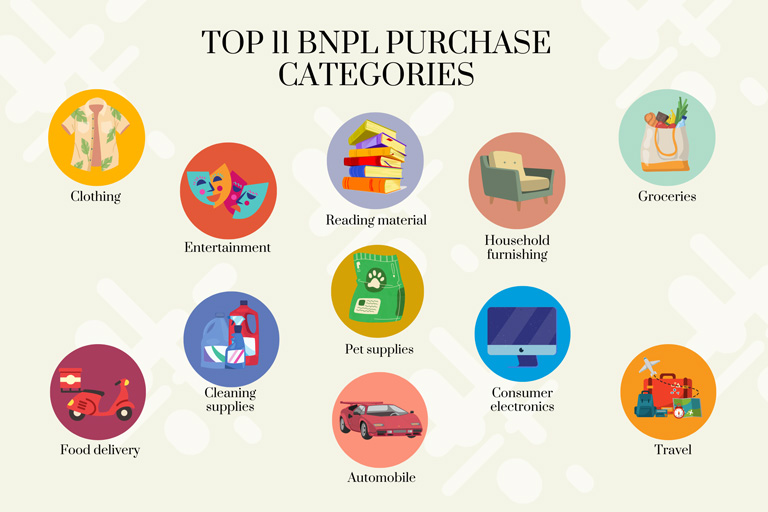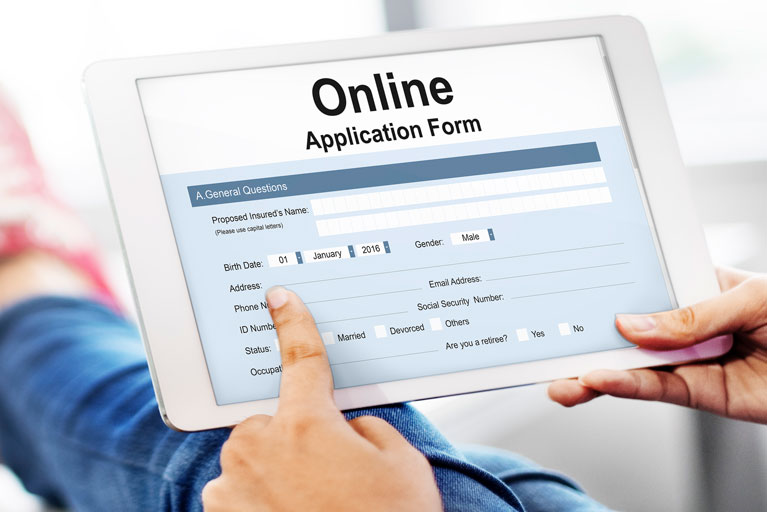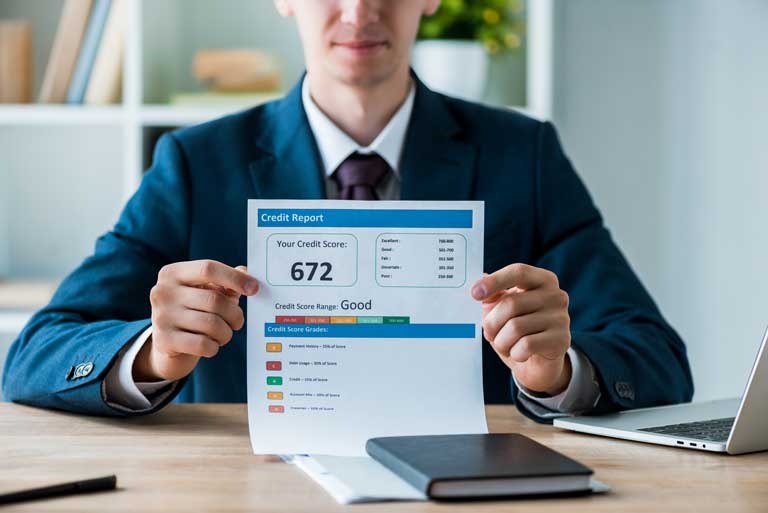Point-of-sale (POS) financing has drastically expanded consumer spending behaviors in the United States. Big-name lenders are now partnering with major retailers to expand consumer access to available funds. This convenient tool is boosting merchant sales more than ever.
But, no matter the size of a business, point-of-sale financing can benefit all merchants.
As a small business, nothing is worse than having an interested customer walk away as soon as they see the cost of your product or service.
Small businesses rely on every single sale. Imagine never losing a customer to cost ever again. Point-of-sale financing can be your solution that erases hesitation on the spot.
What Is Point-of-sale Financing?
Point-of-sale financing is a generalized term. It describes flexible ways for customers to pay for goods and services in small increments over time.
This could be by way of a Buy Now, Pay Later (BNPL) program, a consumer installment loan, or a line of credit. Each one of these options vary in their usefulness and benefits as consumer finance programs for merchants. Depending on the industry your business works in and the products you offer, one of the consumer financing options may work better than another.
We will discuss the differences between each point-of-sale financing program so you can determine which will work for your business.
Buy Now, Pay Later Program Definition
Merchants can offer customers a payment option that proposes incremental installments to pay for a good or service. This service is either backed by a financier or the merchant can offer it on their own terms.
If this is the case, merchants should proceed with caution. In most cases, there is no application and no credit check. No credit check consumer financing for merchants poses a huge risk. If a merchant offers a buy now, pay later program to a risky client, they me out the funds for the product or service if the customer fails to complete the payment arrangement. It is best to set up financing for customers that is backed by a third party. It takes all reliability off the merchant and puts it in someone else’s hands.
Point-Of-Sale Consumer Loan Definition
With point-of-sale consumer lending , customers must submit an application to a merchant-partnered lender. After approval, the borrower receives funds directly into their checking account, up front by a lender. Over time, the full borrowed amount is repaid in small increments.
The benefit of consumer loans is that a merchant is paid up front. Additionally, they do not need to worry about setting up any type of payment arrangement with their customer. It is recommended to research the best third party financing for your customers to get the most out of offering this point-of-sale financing program.
Point-Of-Sale Credit Line Definition
Customers are not provided any money upfront. Rather, the customer would apply for a line of credit from the merchant’s partnered lender. If approved, the customer could use their line of credit directly with that merchant.
Either way, these options allow customers to make purchases on items up front that they may otherwise not have had the immediate budget for. Merchants partner with third-party lenders to integrate these point-of-sale lending platforms into their check-out process. This significantly increases consumers’ purchasing potential.
Moreover, financial institutions back these tools. Providing the merchant with the payment upfront. This means the merchant assumes no risk in offering these solutions to potential borrowers.
The lender or financier that approves the customer for an unsecured financing option assumes all risk.

What is Point-of-sale Financing Used For?
Typically, when thinking of applying for financing, we assume this would be for a major purchase loan. Major purchases would include large ticket items such as electronics, cars, furniture, and jewelry. However, nowadays, these POS lending programs have exploded into the market.
Industries such as eCommerce marketplaces, retail, airlines, beauty, kitchenware, etc are all making it easier than ever for consumers to make purchases. All the while still having a comfortable end-of-the-month bank statement.
You might find it surprising that out of all products that are purchased using a BNPL consumer financing option, over half of those payments accounted for clothing purchases at 63.5%. The runner-up is entertainment at a staggeringly lower percentage of 30.3%. Shockingly, both travel and pet supplies were around 17%, even though travel expenses typically cost significantly more than pet supplies.
Take a look at the below graph for the top industries that BNPL programs fuel

In contrast, point-of-sale consumer financing with lines of credit, is usually more beneficial to larger ticket industries like the ones below:
- Furniture stores
- Appliance stores
- Electronics
- Flights
- Cars
- Accommodations
- High-end clothing or cosmetics
- Jewelry
- Field service
- HVAC
- Renovations
- Veterinary care
- Funeral services
- Dental services
- Accounting
- Auto service and repair
- Law services
How Do I Offer Customers Point-of-sale Financing?
At this point, you may be wanting to know how to sell a loan to a customer. It’s pretty simple. A merchant will need to integrate point-of-sale lending software either within their POS system or directly within their business’s website or phone application.
Merchants would do this through a third-party financier like ECS. Backing POS financing by a third party is the most efficient option for merchants. A partnered financier will exclusively handle the lending process from start to finish. But the customer can access the service directly through the merchant’s website.
This design is optimal for merchants. Adopting third-party consumer financing solutions removes financial risk from small business owners.
Additionally, it leaves collections in the hands of professionals. This frees up your staff’s time. Meaning they can dedicate themselves to productivity in other areas of your business. Such as sales tactics and creating a positive customer experience.
Customers receive an option for POS financing once they are ready to commit to their purchase. Customers can apply for point-of-sale financing within the sale process. There is no need to do it before shopping. Customers do this in person at the checkout cash register or at home if they are shopping online.
How Does Point-of-sale Financing Work?
Now that you’ve learned more about what point-of-sale consumer financing is and how it can be beneficial to your industry, you may ask yourself, “How do I offer financing to my customers?” Well, below we will outline the step-by-step process of setting up point-of-sale financing for customers.
Before you offer any of your consumer financing options to your clients. You must first partner with a financier. Next, you will need to offer this program to any customers who may seem hesitant, in order to secure the sale. Once the customer has agreed to the loan, line of credit, or BNPL you can use the below steps.

The Application
First, the customer receives a prompt to create an account with the lender. In some cases, customers are redirected to the lender’s website from within the retailer’s check-out page.
More conveniently, many merchants choose to integrate their lender’s application directly on their website. This means the customer never has to leave the merchant’s site.
Once on the application, consumers will need to provide a few key details to the lender for approval. This may include name, date of birth, address, and estimated income. Some lenders may require a social security number (SSN) to run a soft credit check. This does not impact a borrower’s credit score.
This entire process is quick. It will not interfere with the check-out experience. Customers can have their approval in as little as a few seconds to a few minutes.
The Payment Plan Selection
Next, the borrower will receive a breakdown of payment plans once their account is created and they receive approval.
To complete the transaction, some point-of-sale loans collect the first installment at checkout. Then spread the balance out evenly over an agreed-upon repayment term. While more desirable options require no “down payment” or initial installment.
The agreed-upon repayment term is up to the borrower. Whichever presented option best fits their budget. Depending on the financier, repayment terms can be anywhere from one to twenty-four-month terms. In some cases, extremely large purchases can qualify for even longer terms.
For example, a $2,000 finance with a 6-month repayment term at 0% APR, would mean the borrower must make 6 monthly payments of $333.33.
Meanwhile, other lenders will divide the total into four payments. The customer will make the first payment at checkout and the rest of the installments are automatically charged every two weeks.
With this option, a $1,000 finance at 0% APR, would require $250 at checkout. Then, two weeks later an additional $250 installment is due. Two weeks after that the next $250 is due. This continues for six weeks in total.
Line of Credit Usage
Once a borrower receives approval for their line of credit application, financiers will supply them with instant POS credit, meaning they can use their credit anytime with that same merchant. So long as they have not used up all their available credit.
The Repayment
Many payment plans have borrowers set up on automatic payments. This means the client’s bank account or card information will be stored and automatically charged for their monthly installment.
However, for plans that are not set up with automatic payments, lenders send an email or text reminders. This helps reduce late or missed payments. If a borrower does make a late payment, some POS lenders may charge a late fee.
Some, conversely, keep their financing fee-free. This helps sell the loan as more attractive during the POS transaction at the merchant checkout.

Customer Benefits to Point-of-sale Financing
You may be asking yourself, why do I need to offer point-of-sale financing? Why would customers choose to use it? Is setting up financing for customers worth it? The following examples are all reasons your clients may appreciate point-of-sale financing. This should make you say, “I want to offer financing for my customers,” by the end of this article.
Let’s take a look:
Ability to Purchase a High-Value Item
If your customer is purchasing a high-value item, they may enjoy or need to split the full cost into smaller monthly payments. This could be for any number of reasons. Some of the below examples may also be inclusive of the purchase of high-value items.
Meeting Immediate Needs
If your customer needs an item or service quickly but cannot afford its cost upfront, pos financing is a highly beneficial solution. Cars, home repairs, furniture, medical procedures, etc are all examples of necessities that many consumers do not have an immediate budget for.
Creating Readily Available Funds
Purchases large or small can take a toll on anyone’s bank account. Oftentimes, consumers may not have the upfront funds for their purchases. In this case, financing may be a valuable solution for both the merchant and the customer.
Flexible Budgeting
Even if a customer does have the funds available to them, a large purchase may make them uncomfortable. If a customer’s budget is tight, spreading out a large payment into a few small monthly payments will help with their expenses.
Lower APR
Some POS loans charge a 30% APR. Though oftentimes, many POS financing options will offer customers little to no interest or 0% APR for a set amount of time. If a customer wants to make a purchase but does not want to add a higher balance to their credit card, POS financing can help. Many credit cards have higher APRs than most POS financing options.
Maxed Out Credit Card Solutions
Speaking of having no readily available funds. Oftentimes, when consumers have no funds, they open or use credit cards. However, a consumer may need to make a purchase that exceeds their credit limit.
In this case, not only would they have no funds in their bank account, but they have also met their credit card’s maximum limit. When this is a concern for a customer, offering POS financing can be a creative solution to completing the sale.
No Credit Card or Credit History- No Problem
In general, applying for loans requires a credit check and a healthy credit history. If a client does not have a credit card yet, they will have little or no credit history.
A great benefit of POS financing is that point-of-sale lenders generally have more lenient criteria for loan approval. Some lenders may check credit scores. Or do a soft credit check, which does not affect a person’s credit score. Others may focus on a borrower’s available checking account funds, monthly income, and other factors for approval.

Credit Building
Credit bureaus suggest having a few lines of credit open to build a better credit score. If your customer shows interest in options to build their credit, they can consider opening a financing account when making a purchase. This is because some POS lenders will report payment history. So if borrowers make payments in full and on time, it will boost their credit scores.
Merchant Pros of Point-of-sale Financing
More Sales Conversions
Merchants who find a way to best outsmart their competition will maintain steady conversion rates. Passive shoppers become active buyers more often. Products and services instantly become more attractive to buyers when they have options for payment.
Possibility of Raising Prices
With the current inflation, merchants are in desperate need to come up with creative ways to remain afloat. All the while, maintaining consumer interest. One of these solutions has been to increase prices. While this maneuver can be risky, scaring off some buyers, it can be necessary.
With POS financing, a price increase is not as daunting. When consumers can split their payment into small monthly installments, increases in the total cost may only add to the monthly payment by a few dollars. Because of this, customers may not even notice a difference with increased prices.
For example, let’s say a bedroom set costs $650. With a 6-month payment plan, the monthly installment would be $108. If the merchant were to mark the bedroom set up to $800, the same 6-month payment plan would have payments of $133.
This is only a $25 difference each month for the customer. For the merchant, it’s an extra $150 in profit.

Increase Profits
Small monthly payments make big purchases easier to digest. Additionally, it encourages larger spending amounts. Before the option of POS financing, clients may have needed to only purchase the bare minimum or save up for what they wanted.
However, POS financing allows customers to instantly make purchases. They can even select to upgrade their orders without the wait time involved with saving. This increase in conversion rates results in higher sales numbers, ticket prices, profit margins, and cash flow.
Build Customer Loyalty
With easy access to funds to your specific merchant location, POS financing makes it easy for customers to return for any future needs. Opening a line of credit gives your clients a reason to return time and time again. Additionally, POS financing software is convenient and easy to use. This generates customer loyalty with repeat business.
Merchant Cons of Point-of-sale Financing
With regard to merchants, the disadvantages of POS financing are few. Some small risks with POS financing for merchants may include:
- The chance that a customer may receive a financing denial during checkout
- Costs associated with partnering with any POS lender
- User-friendliness–Many POS applications are quick and easy. Like the one you would experience with ECS. However, some lenders may provide a cumbersome and lengthy application.
Suppose you do not do your research properly. In that case, you may end up with a financing partner that creates a frustrating checkout experience for your customers.

Consumer Cons of Point-of-sale Financing
As far as consumers are concerned, there may be a few more cons or risks to consider before deciding to apply for POS financing.
- Cost and Interest rates: Many POS financing solutions offer little to no interest for at least a portion of time. However, others do have interest rates to look out for. If a consumer is not careful, they could end up with a 30% APR on their payments. Additionally, missed payments may incur additional fees with certain lenders.
- Overspending: It can be tempting to delay payment with point-of-sale financing. However, this can cause a consumer to overspend on items they do not have a budget to properly pay for and maintain timely payment on.
- Refund complications: If a customer decides they would like to return a product they purchased with POS financing, they may experience some complications. With both the lender and the retailer involved, refunds can prove difficult.
- Impact on credit: Some POS financers may do a credit check to determine a borrower’s creditworthiness. In most cases, however, customers only undergo a soft credit check. Soft credit checks, unlike hard credit checks, do not impact a potential borrower’s credit score.
Additionally, customers may want to check if the lender reports to credit bureaus. This can be an advantage for building credit with proper repayment. However, if a borrower is unable to make timely or complete payments for any reason, their credit can be negatively impacted.
Point-of-sale Alternatives
There are 2 alternatives to point-of-sale financing that your clients can take advantage of. These alternatives both offer a way around consumer hesitation and budgeting concerns.
0% APR Credit Card
If your customer is interested in access to revolving credit that can be used anywhere, they can apply for a credit card that offers a 0% interest rate.
Other than no interest, 0% APR credit cards usually offer additional bonuses. These might include spending incentives, balance transfer incentives, and cash rewards.
Your customer will need to keep in mind that 0% APR perks typically only last for a short promotional period. Usually, this is between 6 to 24 months.
After the introductory period has expired, the cardholder will pay a large interest rate on any remaining balance owed.
Personal Loan
Personal loans offer a large lump sum of money upfront. They can be approved by financial institutions or online lenders. Personal loans are flexible. A borrower may use loan funds to pay for anything. However, it is recommended to use them for large purchases rather than small transactions.
Personal loans usually do not offer 0% APR and therefore the repayment may end up costing the borrower more in the end, depending on their lender’s terms.
Boost Business with POS Financing Powered By ECS
Power your business and bring new opportunities to your customers with competitive lines of credit. When you partner with ECS, our merchant-centric point-of-sale financing solutions offer flexibility and customization.
We embed our simple online application directly into your website. And offer approval decisions in seconds. With unsecured consumer loan options from $500 to $50,000. Our lines of credit offer 0% APR, no prepayment penalties, and high approval rates.
The only thing your customer will need to apply online for convenient POS financing is:
- Their date of birth
- Their email address
- Their phone number
Once the checkout process is complete, your merchant account receives funding in full. Additionally, our 6-month purchase window makes it easy for your clients to return for more with no additional financing steps.
With ECS, you will never have to settle for a “one-size-fits-all” program, with little to no transparency. Our knowledgeable team will evaluate your business model.
From there we offer intelligent recommendations from our comprehensive product menu.
Finally, we provide continuous support and cohesive reporting. Ensuring your success in all things POS financing and payment processing.

Conclusion
For some merchants to complete a sale, POS financing has been the ultimate game changer. Point-of-sale financing solutions allow merchants to attract larger portions of the consumer market. They can work with a more diverse range of clients. Even those who do not have immediate funds to pay for your services.
Remember, do not question your products’ worth or the intentions of your customers. Finances are tricky. And budgets are tight. Especially with the current inflation.
Finding a solution like point-of-sale financing can be a creative way to push hesitation aside. Small monthly payments make it easier for your customers to digest their spending. With this simple solution, your business will never lose a sale again.
To contact sales, click HERE. And to learn more about ECS Point of Sale Financing visit Lending.
